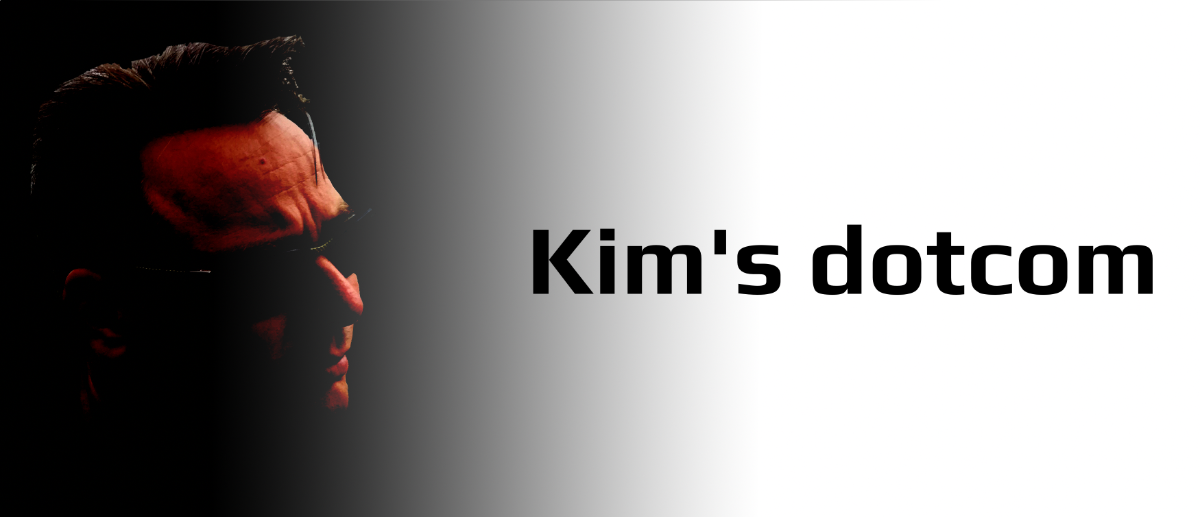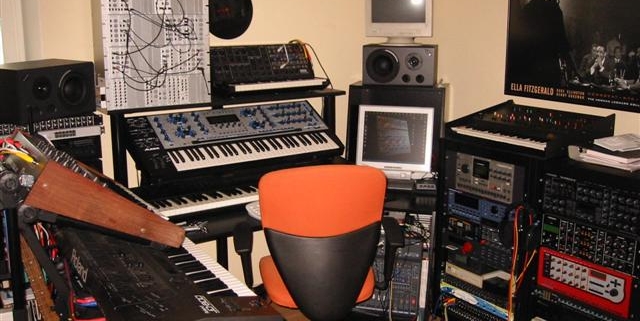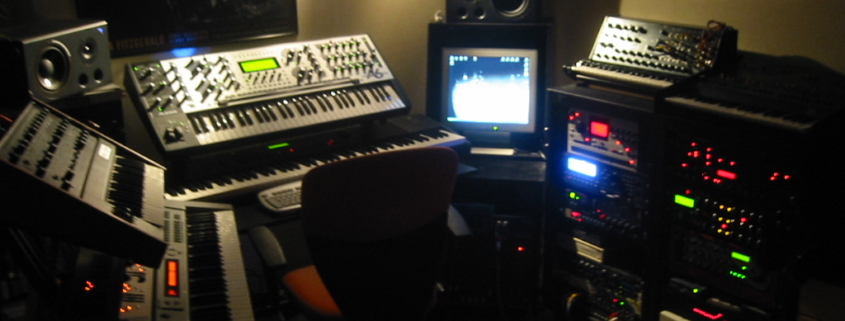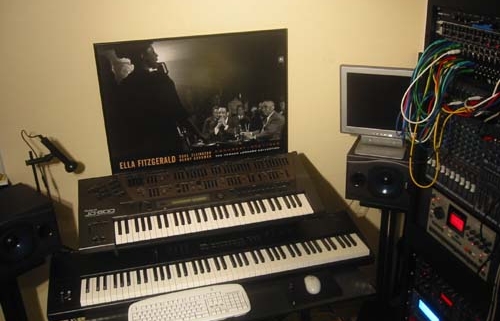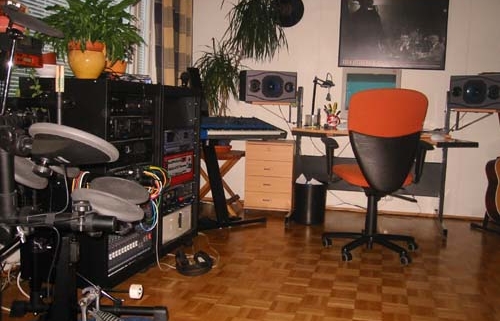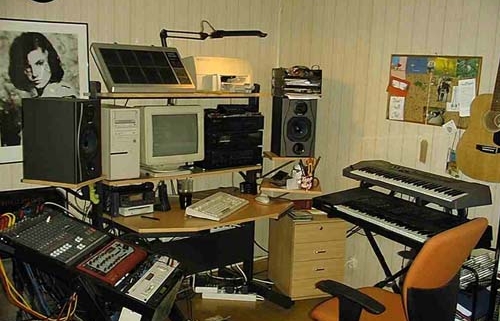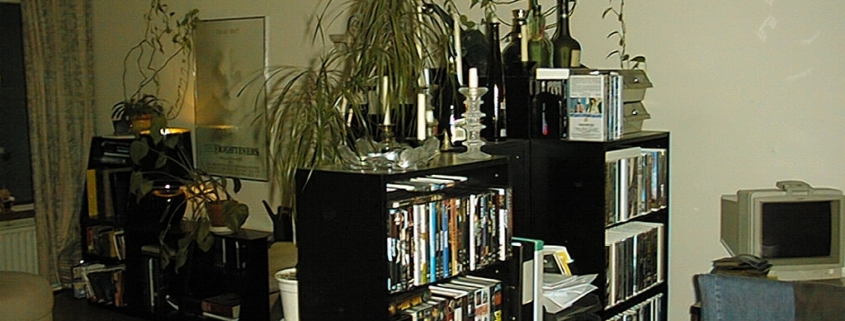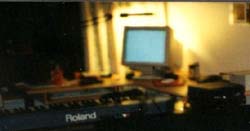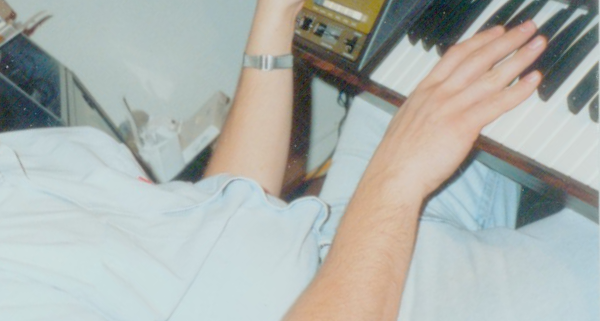The year pretty much continued as the previous had ended. I was by now an eBay regular. Noteworthy acquisitions for the beginning of the year would be the Waldorf Microwave I, which I bought by accident. I put in an low bid, and ended up winning. I really should do that more often, since every now and then I see that an item I might have wanted, but didn’t bid on because of the price usually being too much, actually had gone for quite a low price. Oh well. One learns.
The studio barely had room for anything more, so I had to build an extra shelf to sit on top of my keyboards in front of me. The shelf didn’t have to sit empty for too long. I decided I would start building a modular synthesizer, and I opted for the Doepfer variety, since they had quite a nice selection of modules, plus the price was right. I thought I’d put it together in a manner previously alien to me: wisely. Meaning one module at a time, and really learning that module before getting a new one. I valiantly ordered an empty 6U case, an oscillator and an LFO and sat down and waited. While I waited, I happened to place the winning bid on an entire full 6U system from eBay. So much for going slowly. Even the “wisely” become quite questionable, as I almost immediately sold the thing to afford a slightly bigger modular, as a part of a larger facelift in the studio, described below.
As a computer can’t by definition provide me an analog signal path, and as digital synths can by nature be replaced by software, I decided that my gear henceforth would consist of analog synths (which would also by necessity have a “good” user interface), and the digital ones would either be replaced by software, or just dumped, unless there was a good reason not to. So the virus, Machinedrum and Microwave had to go. The K2600, JD-800 and Nord Modular stayed, however. Also, since the BassStation only served as a MIDI-CV -interface for the Odyssey, that one had to go as well, but only after I had bought a Doepfer MCV-24 interface to replace it, and to provide further ports for stuff to come.
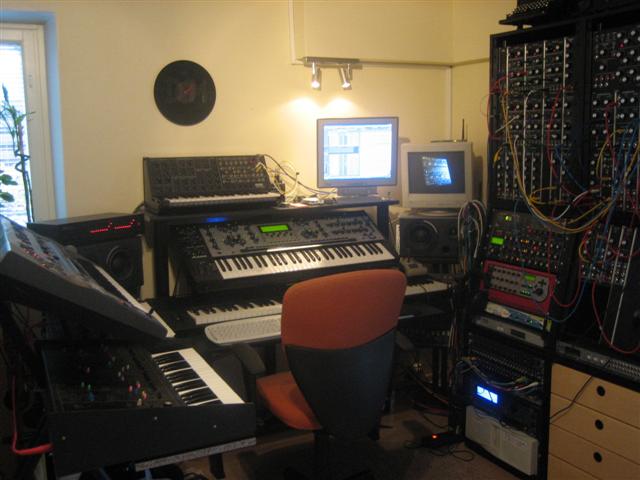
The Doepfer modular, while nice and all that, was really, ahem, ugly. I did not want to end up with a wall of something I simply don’t want to look at, so I decided to focus around some other manufacturer instead. The fact that the mini-jacks felt flimsy and unreliable and that the small module size felt crammed and unergonomic are also factors. Quite a few times, with my hand deep inside the patchcord spaghetti, I pulled out a patch cord by mistake, only to have absolutely no idea where it came from. Oh well. One learns.
I chose Synthesizers.com. I sold a total of 22 rack units of stuff, and got some of them good ole Texas dotcom modules, and oh boy was it worth it!
There is something magical about a large modular. There is also something childishly fun about patching in all your other analogs into it; for example, using LFO’s and envelopes to control the filters of the MS-20, Odyssey or Pro One. All of my previously acquired analogs benefit from the modular, and it’s just a completely new world to me, and I’m absolutely thrilled. MIDI was never this fun.
CV is pretty hardcore.
